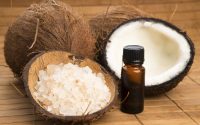What is Canola Oil?
Canola oil is commonly derived from a rapeseed oil from plants specially bred to be low in erucic acid, which reportedly imparts an unfavorable taste to the oil and may cause health problems. It can also be a derivative of the seeds that are produced by cross-breeding multiple types of rapeseed. It was developed in the mid 1970s in Canada and gets its name from the term Canadian oil, low acid — it uses the letters c-a-n from Canadian, an o from oil, an l from low and an a from acid to form the word canola.
Considered by many to be the healthiest of all popular cooking oils, canola oil is frequently credited with reducing the risk of coronary heart disease in humans. This is based on its high monounsaturated fat content and its low percentage of saturated fat. Canola oil is also rich in omega-3 fatty acids, which are considered beneficial to human health.
Canola seed was once only grown in Canada, which still produces about half of the North American canola seed crop. The United States now grows the other half of the seven to 10 tons (6,350 to 9,072 kg) of canola seed produced annually. Pakistan, Mexico, Japan and China are major consumers of canola seed. The United States leads the world in consumption of canola oil and canola meal.
Original rapeseed oil was used centuries ago to burn in lamps in Europe and Asia. Over the years, a small number of people began using it in food preparation. When steam power was developed, rapeseed oil was found to be a perfect machine lubricant that clung to moist metal surfaces better than other available oils. The oil became even more popular during World War II as a lubricant for military ship steam engines. When the war embargoes restricted its import from Europe and Asia, Canada increased its production of rapeseed to meet the military needs.
An attempt to market a refined version of rapeseed oil for cooking was made in the mid 1950s, but most consumers found its greenish color and off-putting taste undesirable. Animal testing indicated the oil may be harmful to human livers and hearts. In 1968, a lower acid version of rapeseed was developed. This was the precursor to the canola oil that was first marketed for cooking in 1974.
Canola seeds and oil continue to be refined to improve their health benefits. In 1998, a new strain was developed that is considered the variety most resistant to diseases and drought. These improvements and developments in canola production have been mainly attributed to genetic engineering.


